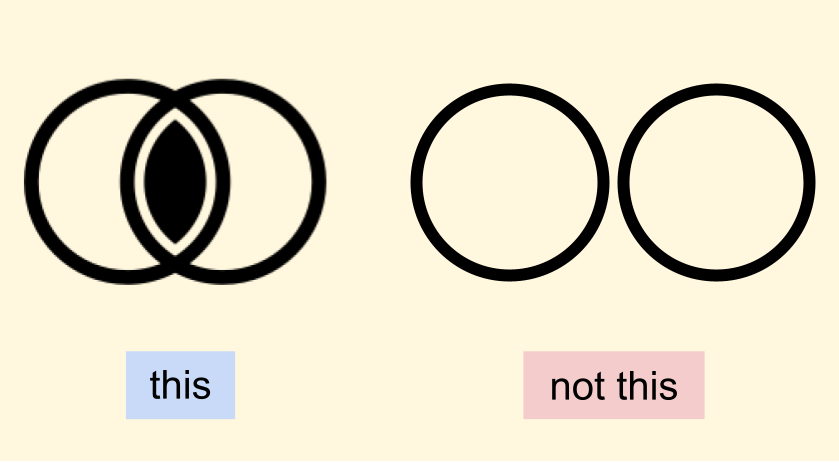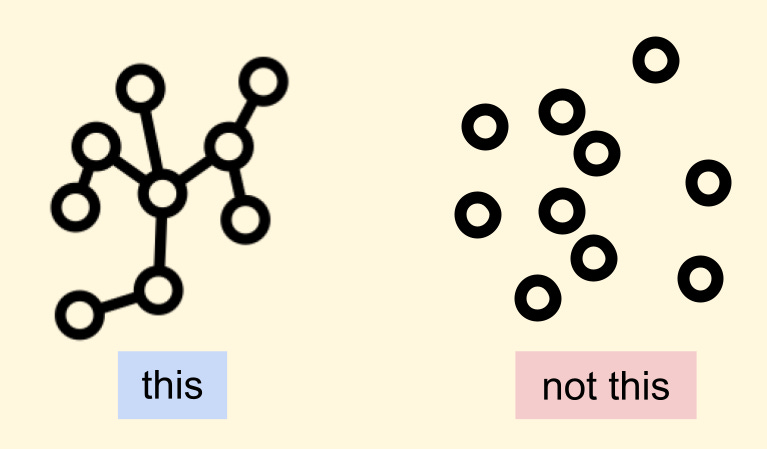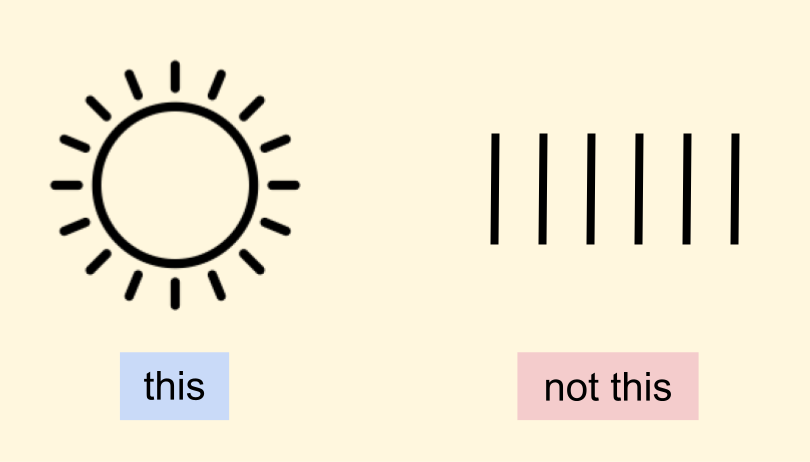The Power of Cross-Functional Community Building
Association Innovation Relies on a Deeper Form of Collaboration
Summary
Building and sustaining a cross-boundary community — a deeper form of collaboration — is a central ingredient for innovation.
This article provides an overview of cross-domain community-building as a superpower in creating and sustaining new value for associations.
In doing so, we will define the concept and frame its importance, address why diverse and cross-functional communities work, consider co-creation and cross-functional product development as levers for innovation, and end by discussing the indispensability of having an association-wide product mindset.
The Product Community is a product development learning community designed specifically for associations.
Why Cross-Functional Communities?
“The real voyage of discovery consists not in seeking new landscapes, but in having new eyes.”
Marcel Proust, Remembrance of Things Past
The 2020 World Economic Forum’s Future of Jobs Report identified cross-functional collaboration as a key leadership skill of the 21st century.
A strong community helps associations more authentically connect with members and build lasting relationships that positively impact everyone: volunteers, staff, leadership, partners, and donors. Mostly, it could be a boon to a refreshed value proposition and to lagging membership numbers.
It’s not that easy, however.
Associations struggle to innovate or try new things. Here are five reasons why:
We over focus on short-term revenue. This drives behavior.
We organize our staff and committees by function (membership, etc.), not by area of excellence or strategic priority. This keeps us siloed.
We tend not to be strategic partners with volunteer leaders. This results in imbalance.
We don’t invest meaningfully in change initiatives. This keeps us on the hamster wheel of tradition.
We are generally risk averse. This prevents fresh thinking.
This article focuses on the centrality and power of cross-functional community and its role in helping to address and alleviate these pain points.
Our shared goal is to make it easier to understand and engage our membership community, identify new markets, and build new value so we can amplify engagement and achieve our shared goals.
Put simply, cross-functional community building is working collaboratively with staff from other departments within your association on a project, a shared goal, or on an ongoing basis to unearth new ideas, create efficiencies, or achieve operational excellence.
A key building block to cross-functional community-building is a specific vision that rallies the entire association around a compelling future. A shared vision is vital as it creates clarity and offers a baseline for momentum.
Once developed, our associations should actively use the vision as a north star; it’s so important that — once developed — we shouldn’t compromise on it.
A shared vision allows space for a cross-functional community to thrive: open debate, idea generation, collaborative exploration, and focused outcomes.
While a cross-functional community should ideally be focused on action, it’s ultimately a roadmap for focused growth: to enhance reach, to sustain connection, and to measure impact.
For us to achieve focused growth, we need the freedom to be open, the license to be vulnerable, and the opportunity to navigate ambiguity in teams.
For example, say your association wants to create a new high-impact program. This program should engage members longitudinally, help them in their careers, introduce them to innovative peers, and deepen their connection to the association.
Who should lead such an initiative? Who should be involved in execution? Who should make key decisions? Based on what criteria will these decisions be made?
In the Product Community, we argue for a cross-functional team with an identified leader. The leader’s job is to shed departmental interests in order to facilitate shared value creation in a healthy, collaborative, and focused way.
Good leaders create shared ownership.
But first, it’s important to tease out and leverage your community’s skills.
Leveraging your Community’s Diverse Capability
Given a strong and specific vision in place, a product-based collaboration will result in sharper design based on specific feedback and input from our most engaged users: the membership.
Product communities are a robust vehicle for working together across boundaries to solve problems and to develop shared ownership over value creation in the process.
Leveraging diverse perspectives and professional lenses seeds innovation.
Those who participate in the product community become conversant with the entire product community system.
What does this mean?
It means that everyone comes with a strength and operates like a learner in a rich, collaborative environment.
All participants master the four dimensions of growth (discovery, development, delivery, and measurement) and the six association product competencies (culture, vision, customer, design + build, go to market, and performance).
We created this list to anchor the concept of cross-functional collaboration. It is a baseline for healthy dialogue and focused action.
Stimulate creative thinking – Disrupt consensus to keep your culture fresh and healthy.
Promote the expression of original ideas – Dissent and out-of-the box thinking can help us uncover fresh perspectives and identify new takes on old ideas.
Connect disparate thinkers – Raise the bar by connecting people from different lenses. Try to move beyond the usual suspects on key assignments.
Foster co-mentorship – Recognize that learning doesn’t just come from the experienced guiding the inexperienced. New professionals have a lot to offer as well.
Grow your staff through focus – Create permission to say ‘no’. Growth comes from focus and focus often happens by pruning (or cutting) programs.
Create healthy boundaries – Don’t take a backseat to volunteer leaders; work together to meet goals, create efficiencies, and achieve the vision.
Engage in continuous discovery – Get closer to, and understand more fully, your community.
Invest in distributed leadership – Dispel the myth that all good ideas come from the top. Streamline idea generation and democratize involvement in value creation.
Embrace risk – Make choices as a community, design these choices as a system, stick to them, and hold each other accountable to take leaps.
Create new energy – Break out of silos and share in the pursuit of value creation.
Those who participate in the product community create products with the support of their peers. Everyone who participates in the product community brings experience and a lens.
This may be membership, events, marketing, learning, budgeting, or publications.
Most association professionals lack formal product development training and will invariably lack experience in all areas of association management.
This ensures that participants play a powerful dual role that make the learning community a unique experience:
Contributing as an expert – playing to, and sharing, your strengths
Learning as a novice – relying on, and learning from, others
Playing to one’s strengths is often considered an advantage, while playing to one’s weaknesses is considered a deficit.
We think otherwise in the product community.
When experts are positioned as learners, it can help even the platform and create a context of openness and trust. From this, we can be unguarded, more creative, and achieve a shared focus on how to best amplify impact.
Not only can we achieve better solutions when we pull in people who are outside of their domain of expertise.
Sustained collaboration across teams can tap hidden talents and increase impact because teams will start to make connections between initiatives, streamline redundant processes, and generally make more happen.
This is highly beneficial for associations looking to create a culture of innovation.
Co-Creation as Differentiator
Playing the dual role of expert and novice creates a culture of reliance as everyone teaches, learns, shapes, and propels the creation of new products in a highly-charged collaborative environment.
The outcome is the ingredients for a healthy culture: high-impact, focused work with earned trust. All participants in product communities play diverse and varied roles:
Identifying and validating new ideas
Facilitating the diffusion of innovation
Participating in integrated execution
Contributing to healthy debate and community building
Helping to forge a shared vision, and
Brokering the transfer of knowledge with peer colleagues.
Trust in a cross-functional community is fostering a climate of empathy and directness. That is, can we create creative communities that put unvarnished ideas on the table while remaining decent and kind? Can we disagree and coexist? Can we employ appreciative inquiry to further our shared pursuits?
Perhaps what’s most key is the emergence of broad-based, cross-departmental ownership of product development, inclusive ownership over product management, and shared ownership over a new and healthy culture of engagement.
It means our associations can become successfully-humming learning communities, in which people solve problems and build knowledge across boundaries.
This learning community is as much about awareness, trust, and community-building as it is about skill-building.
These are key ingredients for co-creation.
According to David Nour, author of the books Relationship Economics and Co-Create: How Your Business Will Profit Innovative and Strategic Collaboration, co-creation requires a “certain level of respect, trust, intimacy, and, most important, an authentic commitment to one another's best interests.”
Relationship Economics is about identifying and changing our behaviors by purposefully moving from relationship creation to relationship capitalization through the Six Phases of Strategic Relationships:
Mapping – Identifying relevant individuals who can add specific value to [the problem needed to be solved] and how you can connect with them.
Relating – Actively expressing interest in others to create connections on which relationships can be built. Relating emerges most easily from a shared mission or vision.
Nurturing – Prioritizing opportunities to offer help and acting on those with the highest value. Nurturing includes making relationship currency deposits and confirming you have delivered value.
Sustaining – Keeping the relationship strong by proactively staying in touch, creating touch points with others in order to broaden relationships, and making strategic plans for the relationship's future growth.
Requesting – Evaluating when to request help to achieve objectives, framing requests appropriately, and providing pertinent and appropriate information to make the request actionable.
Capitalizing – Accessing and gaining quantifiable business outcomes from the value in the relationship that encourage both you and others to grow in a mutually beneficial way.
Understanding the process of mapping, relating, nurturing, and sustaining before we can access and capitalize the full value of strategic relationships.
It can also serve as a powerful platform for cross-functional product development.
Cross-Functional Product Development
“Knowing in part may make a fine tale, but wisdom comes from seeing
the whole.”Ed Young, Seven Blind Mice
Let’s face it, it’s easier to run an association organized by department. Accountability is easier to assign and siloes provide clarity and create efficiencies.
Play nice with each other and we achieve our mission, vision, and values, right?
We disagree.
Innovation is rarely departmental. The world is simply too complex! Understanding and empathizing with members takes sustained, healthy collaboration. In essence, we are all responsible for creating and delivering value.
Why cross-functional product design?
A stream of innovative product ideas has to be generated and sustained.
Our product portfolios (a collection of our offerings) should be interdependent, leverageable, and owned by the community. It’s how we achieve focus and how we create agile, relevant spinoffs.
The complex nature of product development requires healthy interdisciplinary collaboration. Successful products should be developed by diverse teams who shepherd the product from identifying member needs and initial concept design to development, distribution, and successful engagement.
It creates shared ownership, shared pride, and shared momentum. In short, it creates a culture of innovation.
There are other benefits.
A holistic, cross-functional approach to product development shortens development time, reduces costs, and delivers value that more closely meets member changing needs.
Cross-functional teams can also better recognize patterns and deal with the complex interplay among member needs, cost, pricing, and expected outcomes.
Two core beliefs form the foundation for this approach.
First, product community participants come from different perspectives to not only develop products but new revenue-bearing business opportunities.
Second, the knowledge and experience participants gain while developing these business opportunities prepares them to participate and lead product efforts at their association.
The iterative nature of product development allows cross-functional association teams to plan, design, and develop relevant products.
This is important for the following reasons:
Members desire relevant products.
Developing complex products — such as: annual conference, credentialing system, software, or longitudinal learning pathway — forces participants to confront evolving technical and market challenges.
The principles of cross-functional community and product development are better illustrated with complex products than with simple products.
Complex products require iteration to reach successful solution.
A key outcome of engaging in the product community is a steady stream of product ideas. Associations are never at a loss for new ideas; within a product community new ideas have three important distinctions:
We have the criteria to identify good ideas and distinguish between opportunities and distractions.
We know that members want these new products.
We have a greater chance to execute within limited means.
We know our products extend the association value proposition.
Developing and engaging meaningfully in a cross-functional community also means your association will gain a product mindset.
Socializing an Association-Wide Product Mindset
Associations excel at community-building; this is one of our timeless value drivers.
How can we complement our community-building instinct with relevant, usable skills in product development?
How can we socialize these two skill areas – community building and product development – so we have a cohesive staff focused on the same problems in the same way?
We’ve developed the association product competencies to drive a product mindset which incorporates the knowledge, skills, and behaviors that contribute to individual, team, and organizational performance.
Knowledge is gained through experience and practice. Skills are the result of applying knowledge by creating new products.
The product community is natively designed as a peer learning experience that is live, interactive, and engaging. Product community resources are a combination of frameworks, articles, videos, and online content.
The product community is led by one or more facilitators charged with guiding the experience, communicating the program goals, and holding the cohort accountable for completing the work.
The facilitator also adjusts weekly lessons and objectives and invites subject matter experts as resources to the cohort.
The product community is an investment in people in both money and time.
Intentionally designed cohorts should be diverse coming from all angles of the association: membership, education, finance, marketing, engagement, publishing, technology, grants, and development.
This intentional cross-boundary grouping creates an essential tension that propels a new way of developing value for the customer.
From a systems perspective, cooperation among diverse actors is seen as key to successful innovation.
Remember, product-led growth fuels connection. Join the product community and flip your destiny.
About the Author
James Young is founder and chief learning officer of the product community®. Jim is an engaging trainer and leading thinker in the worlds of associations, learning communities, and product development. Prior to starting the product community®, Jim served as Chief Learning Officer at both the American College of Chest Physicians and the Society of College and University Planning.
Please contact me for a conversation: james@productcommunity.us.







